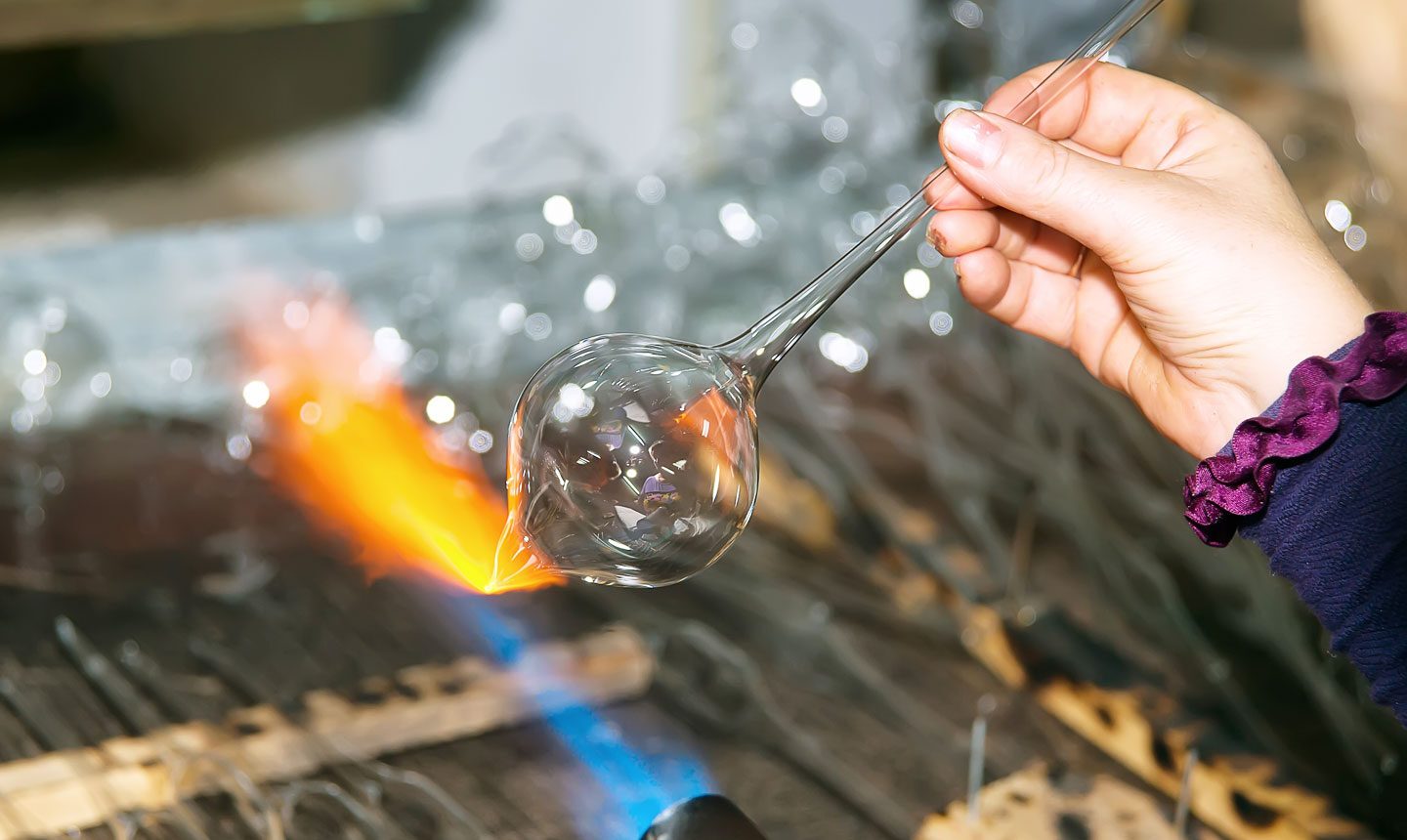The Collection
We call this Christmas tree design “Silent Night” because of its calm, luxurious feeling.
The larger tree on the left features hand-painted, mouth-blown glass ornaments from the German village of Lauscha, the birthplace of Christmas ornaments.
Lauscha has been a center for glass blowing since 1597. But the village took on special significance in 1847, when Lauscha glass blowers became the first to make decorated glass baubles to hang on their Christmas trees.
Lauscha Christmas ornaments have been declared a UNESCO Cultural Heritage.
This important designation is given to preserve important cultural and artistic traditions that are at risk of extinction.
The smaller tree on the right is also special because its gold icicles are also a UNSECO World Heritage. These ornaments are made of Czech beaded glass, a style of ornaments that was common 100 years ago. Today, only one shop in Bohemia still produces these special ornaments.
The smaller tree also features blown glass bells and baubles made by a Czech company that has decorated the White House Christmas tree and trees for the Bush Presidential Library.
The Story
When I started my interior decorating business, friends would ask me why I chose to focus on holiday designs. Back then my answer was “Because I wanted to share the beautiful Christmas trees I enjoyed in my European childhood.”
That’s still true. But after the years I’ve spent in the Christmas decorating business, learning about industry trends and building relationships with artisan ornament makers across European, I add something else that strongly motivates me today:
“Because I want to do my part to keep the craft of glass ornament making alive.”
A Craft at Risk of Extinction
You see, hand-decorated, blown glass Christmas ornaments are a dying tradition that is very much at risk of extinction.
For over 175 years, blown glass ornaments have been made in small artisanal shops in small villages across Europe. Most of these shops are in remote areas of Germany, Czechia, Poland, Romania, Ukraine and other countries.
But for the last generation, these small shops are under pressure from cheap imports from Asian.
Competition from cheap labor markets has driven many ornament makers out of business, and pushed others to move their shops to areas with cheaper labor but much lower skills.
One of my favorite ornament suppliers is a Lauscha glassworks. Their ornaments are featured in many of my designs. Back in the early 1990s, this glassworks employed over 300 local villagers. Today it employs barely 30 people.
Without good job prospects, many are leaving to industry to find other work.
Glass blowing is a skill that isn’t easily acquired. It takes two years of training before a glass blower is trusted to produce Christmas ornaments.
That means once a trained glass blower leaves, it’s hard to find a replacement.
European Glass is Better
Why does it matter if ornament making moves to Asia?
Because European ornaments are truly special, and if we lose the craft, we lose one of the things that makes Christmas magical.
Glass ornaments made in Asia just don’t match the quality, shine and color you find in a handmade European ornament. The glass is thinner and breaks more easily, the decorative elements are clumsy, and the ornament loses glitter.
Asian ornament makers also often skip the important step of silvering the inside of the ornament. Silvering is the magic trick that makes a high-quality ornament shine. The inside of the ornament becomes a mirror that reflects light back through the outside paint, which makes the ornament’s color more intense.
On top of that, Europe has many innovative ornament makers that continue to experiment with fresh designs that speak to today’s tastes. Preserving a tradition doesn’t mean frumpy design!
Luxury for the 21 Century
In today’s world, “Luxury” doesn’t mean bling. It means craftsmanship and provenance. It means handwork made with a skill that raises the work to the level of art.
Lauscha glass ornaments truly fit that description. Please help preserve this art form.





